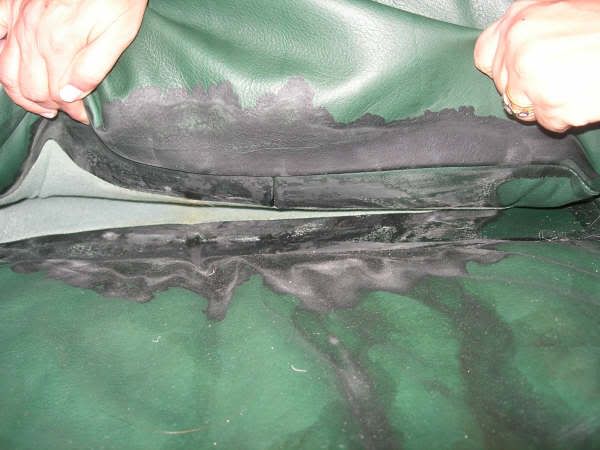When a typical cat urine contaminated leather look like this picture the recommended procedure requires these steps.

1] d’Protein-11.0 a pH 11.0 cleaner to remove the protein component of the stains (uric acid) from attracting bacteria from the atmosphere that ferments the urine resulting in the release of ammonia to the foul smelling mercaptan odors.
2] d’Urine-2.1 a pH 2.1 urine neutralizing agent to neutralize the phosphorus salt from shifting the pH to alkaline; that result in tackiness and sliminess to the leather that denature it…slowly reverting to rawhide.
3] d’Odor-4.5 a pH 4.5 deodorizer to reduce the above smells more pleasant to continue to work on.
4] Cleaner-3.8 a pH 3.8 cleaner and Rinse-3.0 a pH 3.0 rinse to remove residues until towel shows clean.
5] At this point it is best to sterilize the contaminated areas with d’Bacteria-3.7 to free the contaminated areas from bacteria causing odors.
6] Then comes to the leather structure restoration with Hydrator-3.3 to relax the leather structure and Fatliquor-5.0 to replenish the fatliquor leach out from the urine contamination. This leather rejuvenating system softens and strengthens the leather with suppleness and prevents it from cracking.
7] Optional color refinishing where necessary.
8] To impart a classical leather scent for masking – use leather Scent-B.
The above is the general structure of urine decontamination process; depends on the severity of the contamination; the amount of urine deposited and the ageing of the urine is the deciding factor on how thorough the treatment should be.
Roger Koh
Leather Doctor®